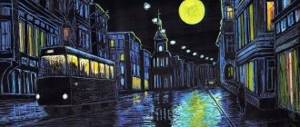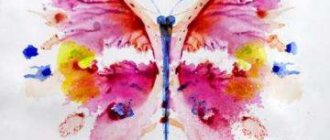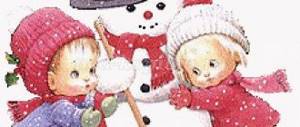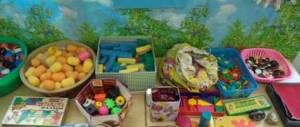Some lyrics
Drawing
is a skill that develops with practice. You're not alone when you think you're terrible at drawing! All great artists started by drawing stick figures like this:
The reason they moved on from these so-called " stick figures"
to something much greater, is that they had
an insatiable desire to draw better and better with each new touch of pencil to paper.
This desire set them apart from the rest and is the only reason they became successful. First of all, the fact that you decided to dedicate your time to improving your drawing skills is already a great achievement. Why you ask? This is really important because in art and creativity there must be passion, interest, curiosity and dedication, without which the learning process will not be as effective.
So in your case, the biggest obstacle is already behind you and you can start drawing by observing the things around you! That's how simple it is!
The following steps that I am going to suggest should help you gain the drawing skills you want and will also show you the path that you will have to go through to become an artist.
But before you blindly follow the path below, always remember that you are free to choose your own unique path—the path that is right for you. The real goal is to practice regularly with the intention of learning , so it doesn't matter where you start on your drawing journey.
Please note that each step mentioned below may take weeks, months or even years to perfect. It all depends on how much you really want to improve your skills and how much effort you are willing to put in.
There is plenty of material available online for each step below, including YouTube. I recommend checking out different sources, learning different styles, and practicing the style that suits you best.
Let's start!
Lesson summary “Genres of Fine Art”
Lesson summary on fine arts on the topic
Genres in fine arts
Goal: to expand the concept of genres in the fine arts
Tasks:
- Systematize students' knowledge about the genres of fine art.
- Define the concepts: genre, still life, portrait, landscape, animalistic genre, everyday and historical genres, etc.
- Cultivate interest in world culture and art.
Equipment: reproductions of paintings of different genres, presentation on the topic of the lesson, task cards.
During the classes
I. Organizational moment.
Greetings.
- Hello guys. The bell rang and the lesson began.
Checking readiness for the lesson.
– Order on the table, Order in the head, We are ALL ready for the lesson!
II. Introduction to the topic of the lesson.
– Today we will take a fascinating journey into the world of art and learn a lot of new and interesting things.
– You are already familiar with the concept of “types” of fine art. List them. (Painting, sculpture, architecture, graphics, creative arts.) - And today we have to find out what a “genre” is and what types of genres exist in the fine arts.
III. Learning new material.
Painting is a type of fine art, works of art that are created using paints applied to any hard surface.
The breadth and completeness of coverage of reality available to painting determine the diversity of its inherent genres.
Genre – in the theory of fine arts, an area of art limited by the range of themes, subjects of the image, and the author’s attitude to the subject.
In modern painting there are the following genres: portrait, historical, mythological, battle, everyday, landscape, still life, animalistic genre.
Although the concept of “genre” appeared in painting relatively recently, certain genre differences have existed since ancient times: images of animals in Paleolithic caves, portraits of Ancient Egypt and Mesopotamia from 3 thousand BC, landscapes and still lifes in Hellenistic and Roman mosaics and frescoes. The formation of the genre as a system in easel painting began in Europe in the 15th–16th centuries. and ended mainly in the 17th century, when, in addition to the division of fine art into genres, the concept of “high” and “low” genres appeared, depending on the subject of the image, theme, plot. The “high” genre included historical and mythological genres, and the “low” genre included portrait, landscape, and still life. This gradation of genres lasted until the 19th century. although with exceptions.
– Now let’s get acquainted in more detail with some of the genres of fine art.
1. Landscape - an image of any area, pictures of nature: rivers, mountains, fields, forests, rural or urban landscapes; According to the subject of the image, they distinguish between architectural, industrial landscape, urban, rural, marina (depicts the sea), historical and fantastic (futurological) landscape.
Often when listing genres of art, landscape is mentioned in one of the last places. He is sometimes given a secondary role in relation to the plot of the picture. But today such a point of view, consistent with ancient ideas, seems at least naive. In our time of troubled thoughts about the crisis in the relationship between man and nature, the search for ways to bring civilization and the environment closer together, landscape art often appears as a wise teacher. In the works of past eras, in the best paintings of our time, it demonstrates how nature enters human consciousness, transforming itself into a symbol, lyrical reflection or alarming warning.
The landscape includes some basic elements:
- earth's surface,
- Vegetation,
- human buildings,
- View perspective.
The picture may also include:
- Reservoirs (lakes, seas, rivers),
- fauna,
- Of people.
- Light.
- Meteorological formations (clouds, rain).
In addition, the following landscape groups can be distinguished:
• SEA – marinas, marine paintings as an independent direction in the landscape appeared in the Netherlands in the 17th century. In calm and storm, in any weather, the sea is beautiful. Waves and sea surf, the sea element in the paintings of artists often personifies human manifestations of love, passion, and peace. • Rural – pictures of villages and villages, landscapes of peasant life. In rural landscapes, artists glorify unity with nature, the harmonious coexistence of man and the surrounding world, simple and understandable rural life, and love for his native land. • Urban – city landscape, another name is urban landscape. Types of streets and neighborhoods populated by residents and transport. In Italian Renaissance art there was a veduta - an urban view with detailed images of buildings, cozy streets, pavements and sidewalks. • Architectural - a landscape that demonstrates the beauty of buildings and structures and their fragments. Stone bridges, towers and fortresses, temples and lighthouses become the object of the artist’s attention. Landscape artists of this style love to depict historical buildings and ruins of ancient cities. • Park (estate) - a landscape of nature inhabited by humans, equipped for a pleasant pastime. Neat paths and comfortable benches, romantic lanterns, graceful statues and fragments of architecture are characteristic of the park landscape.
• Industrial, industrial landscape - appeared with the development of large production and urban construction. Such landscapes can be found in the works of the Impressionists and, most of all, during the period of socialist realism, when artists embodied achievements in industry in works of art. • Lyrical landscape or mood landscape. Such landscapes expressively convey to the viewer the artist’s moods and impressions of nature at the time of painting. It could be the serene silence and calm of a foggy morning, or the despondency and hopelessness of a cold, stormy autumn.
2. Portrait is a genre of fine art dedicated to the depiction of a person or group of people.
Portrait is one of the oldest genres of fine art. Types of portraits – front, chamber, single, group, full-length, half-length, paired, full-length, self-portrait.
Portrait (French portrait, from Old French portraire - “to reproduce something feature by feature”) is an image of a person made by means of fine art (painting, engraving, sculpture, photography), as well as (in a figurative sense) verbal description (in particularly in the literature).
This genre is widespread not only in painting, but also in sculpture, graphics, etc. The main requirements for a portrait are the conveyance of external resemblance and the disclosure of the inner world, the essence of a person’s character.
A portrait can be considered completely satisfactory when it reproduces the original exactly, with all the features of its appearance and internal individual character, in its most familiar pose, with its most characteristic expression. Satisfying these requirements is included in the scope of the tasks of art and can lead to highly artistic results if performed by gifted artists who are able to invest their personal taste, talent and skill in the reproduction of reality.
The image can be one person, as well as groups of two or three people. The image can be chest-length, knee-length, waist-length or full-length. The pose involves three angles: face (full face), three-quarter turn in one direction or another, and in profile
The boundaries of the portrait genre are very fluid, and often the portrait itself can be combined in one work with elements of other genres.
- Historical portrait - depicts a figure of the past and created from the memories or imagination of the master, based on auxiliary (literary, artistic, documentary, etc.) material. When combining a portrait with a domestic or historical genre, the model often interacts with fictional characters.
- Posthumous (retrospective) portrait - made after the death of the depicted people based on their lifetime images, or even completely composed.
- Portrait-painting - the person being portrayed is presented in a semantic and plot relationship with the world of things around him, nature, architectural motifs and other people (the latter is a group portrait-painting). Walking portrait - an image of a man walking against the backdrop of nature arose in England in the 18th century and became popular in the era of sentimentalism
- Allegorical
3. Still life is a genre of fine art showing inanimate objects placed in a real everyday environment and organized into a specific group; a painting depicting household items, flowers, fruits, dead game, caught fish.
A still life can be endowed with a complex symbolic meaning, play the role of a decorative panel, or be a “trick” that gives an illusory reproduction of real objects or figures that evoke the effect of the presence of a genuine nature.
The starting point of early still life can be found in the 15th–16th centuries, when it was considered as part of a historical or genre composition. For a long time, still life remained connected with a religious painting, framing the figures of the Mother of God and Christ with flower garlands, and often located on the reverse side of the altar image. Also in the 16th century, the tradition of creating portraits depicting a skull was widespread. Early still lifes often served a utilitarian function, for example, as a decoration for cabinet doors or to disguise a wall niche.
Still life finally took shape as an independent genre of painting in the works of Dutch and Flemish artists of the 17th century. Objects in still life painting of this period often contain a hidden allegory - either of the transience of all earthly things and the inevitability of death, or, in a broader sense, of the Passion of Christ and the Resurrection. This meaning is conveyed through the use of objects - in most cases familiar and encountered in everyday life - which are endowed with additional symbolic meaning.
Starting from the 40s of the 17th century, still life in Dutch painting became widespread as an independent genre. The reasons for the popularity of floral still life can be found in the everyday life of Dutch society - the tradition of having gardens, country villas or indoor plants - as well as favorable natural conditions for the development of floriculture.
Still life (French nature morte, literally - dead nature; English still life - motionless life) is a genre of fine art dedicated to the depiction of things organized in a group. In addition to inanimate objects, still life also depicts objects of living nature, isolated from their natural connections and thereby turned into a thing - fish on the table, flowers in a bouquet, etc. The image of living, moving creatures - insects, birds, animals, even people - can sometimes be included in a still life, but only complementing its main motive. Compared to other genres, in still life the significance of small objects isolated from the context of everyday life increases, increased attention is paid to the structure and details of objects, and surface texture.
Types of still life
- Household still life - a still life depicting kitchen utensils and food products.
- Floral still life is a still life depiction of flowers and plants; sometimes the composition may include fruits, vegetables, and kitchen utensils.
- Fruit still life - a still life depicts fruits, similar to a flower still life, only the main thing in the composition is fruits, sometimes vegetables.
- Still life in the interior - an image of a still life against the background of the interior of the room.
- Tonal still life - a monochrome still life, the presence of only ONE color.
- Thematic-thematic still life is a type of still life in which the depicted objects are united by a common theme or plot.
- Educational still life - (also called academic or staged) an image of a still life aimed at teaching students the basics of visual literacy, as well as introducing them to independent creative work.
- Creative still life is a still life made in a free theme, with the aim of developing imagination, fantasy, and mastery in various techniques.
- Decorative still life – still life, involves a creative transition from nature to composition, embodied with the help of various materials.
Still lifes are also distinguished:
— by color (warm, cold);
- by location (still life in the interior, in the landscape, staged);
- by execution time (short-term - sketches,
long-term - multi-hour productions);
- according to the formulation of the educational task (realistic, decorative, etc.)
4. Animalistic – associated with the depiction of animals in painting, sculpture and graphics; combines natural scientific and artistic principles.
Animalistic genre is a genre of fine art showing animals. The animal artist pays attention to the artistic and figurative characteristics of the animal, its habits, the decorative expressiveness of the figure and silhouette. Often animals are endowed with traits, actions and experiences inherent in humans. Images of animals are often found in ancient sculpture and vase painting.
5. Hippic genre - comes from the Greek. hippos - horse) is a genre of fine art in which the main motif is the image of a horse.
6. Battle genre - such works depict military events;
7. Historical genre is one of the main genres of fine art, dedicated to historical events of the past and present, socially significant phenomena in the history of peoples.
Historical genre. One of the leading genres of fine art, dedicated to historical events and figures, significant phenomena in the history of a particular country. Addressed mainly to the past (sometimes to deep antiquity), the historical genre also includes images of recent events, the historical significance of which is recognized by contemporaries. The main types of works of this genre are historical paintings, murals, reliefs and round sculptures, graphics. The historical genre is often intertwined with other genres - everyday (historical and everyday images); portrait (images of figures of the past, group portrait-historical compositions), landscape (the so-called historical landscape); The battle genre is especially closely related to it when it reveals the historical meaning of military events. Dramatic clashes between real historical characters and events in the class and national liberation struggles often found artistic expression in the historical genre. The historical genre in its modern form was fully formed only in the 18th–19th centuries, but many of its features developed much earlier. The beginnings of this genre have been known since ancient times, when memories of real migrations or tribal wars were combined with folklore fiction and myths.
8. The mythological genre (fictional epic) is a work of art that reflects mythological subjects.
9. Religious genre is a genre of fine art, the main subjects of which are episodes from the Bible and the Gospel.
10. Pastoral - French. pastorale - pastoral, rural - a genre depicting peaceful and simple rural life.
11. Everyday genre is a genre of fine art that shows scenes of everyday, personal life of a person, everyday life from peasant and urban life.
The everyday genre can reflect the private life of the inhabitants of a royal palace, a peasant hut, a noble estate, and a city apartment; various everyday situations can be presented against the backdrop of nature, in a public place, and on a city street. Thus, the everyday genre is very closely intertwined with other genres - historical, portrait, landscape, battle. By depicting the everyday life of people, artists strive to show their spiritual world. Images of everyday scenes have been known since ancient times, but as an independent genre of art, everyday painting developed first in the East - by the 10th century, and later in Europe - in the 16th century, when secular painting replaced religious painting. In Russia, active interest in the everyday genre began in the second half of the 18th century.
IV. Consolidation of new material.
– Name what genres of fine art these works of art belong to.
Work on task cards in pairs.
– Match the work of art and the genre. (For weak children.) - Sign what genre of fine art do these works belong to? (For strong children.)
V. Generalization of the studied material.
1. Define the concept of “genre”. Give examples of genres of fine art.
2. Continue defining:
- a genre of fine art showing inanimate objects placed in a real everyday environment and organized into a specific group; a painting depicting household items, flowers, fruits, killed game, caught fish - ... (still life).
- a genre of fine art dedicated to the depiction of a person or group of people - ... (portrait).
- an image of any area, pictures of nature: rivers, mountains, fields, forests, rural or urban landscapes - ... (landscape).
3. Who do animal artists depict?
4. What is the name of the genre of fine art that depicts the daily lives of people?
5. What is the historical genre and can it have something in common with the everyday genre? Explain.
VI. Lesson summary.
– What new did you learn in the lesson? – What did you especially like or remember?
VII. Homework.
Prepare a report on any genre of fine art.






